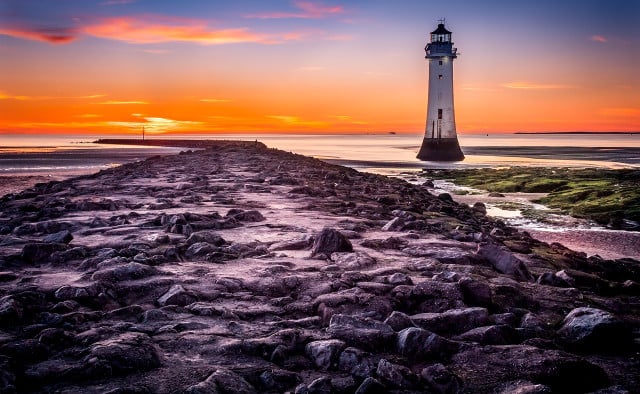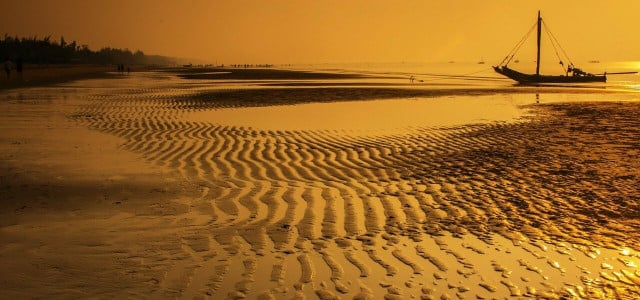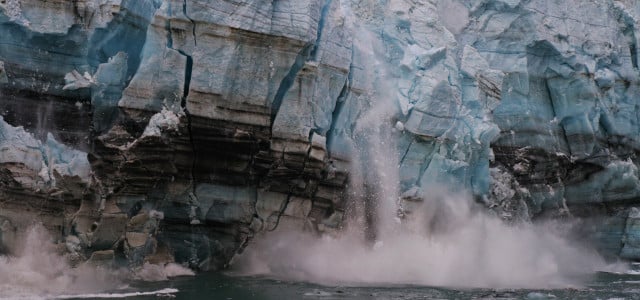What is a king tide? And what is this natural occurrence connected to climate change? Here we will outline the scientific basics behind king tides and how observing them can help us better understand the effects of climate change.
What is a King Tide?

First of all, ‘king tide’ is not a scientific term and is not used in a scientific context. The expression has its origins in New Zealand and Australia where it is used to describe particularly high tides that occur during the year. It is now most often used in North America, particularly in low-lying South Florida, where king tides can cause occasional flooding.
King tides occur when the orbits and alignment of the Earth, moon, and sun all combine to produce the greatest tidal effects of the year. King tides regularly lead to minor flooding events in low-lying areas near the coast and in tidal river zones.
According to the EPA, a king tide is the highest predicted high tide of the year at a coastal location. It is above the highest water level reached at high tide on an average day. King tides are a normal occurrence once or twice every year in coastal areas. In the United States, they are predicted by the National Oceanic and Atmospheric Administration (NOAA).
Prediction of king tides is relatively easy since they are caused entirely by the orbits and alignments of the Earth and the moon in relation to the sun, and this particular type of alignment will occur consistently throughout the year. NOAA’s Office for Coastal Management and The King Tides Project offer an excellent interactive map, which predicts coming king tide events in real-time.
This information will become ever more important to authorities given how the effects of climate change and corresponding sea level rise can increase the potential damage that king tides can create in vulnerable regions.
According to NOAA, more than half of the world’s population lives in coastal areas, with more than one trillion dollars’ worth of private property, public infrastructure, and businesses at risk from rising seas caused by climate change. Throw into the mix the natural occurrence of king tides, and it quickly becomes clear that good forecasting measures and preparations for future tidal events are imperative to ensure the safety of coastal populations in the face of climate change.
Where Do King Tides Occur?
Throughout the U.S. some locations are particularly well known for their king tides. These include Florida, California, South Carolina, and Charleston. For example, in Charleston, the average high tide reaches around 5 to 6 feet, but king tides can reach up to 7 feet or more. King tides can cause localized tidal flooding, as well as endanger shoreline developments, housing, habitat restoration, and infrastructure, with these effects dramatically increasing if a king tide occurs at the same time as a hurricane or storm.
The Connection of King Tides to Climate Change



Climate change is raising sea levels around the world, so it is easy to imagine how this would make flooding events from king tides more severe. The tidal flooding that happens just a few times a year at the annual peak could become a daily occurrence in the coming years and decades.
In many coastal areas, sea level rise will make today’s king tides become everyday tides in the future. The far-reaching societal and economic consequences of this prediction can only be hinted at, but most will agree it presents a serious problem for present and future generations and must be tackled accordingly.
Planning for the Future
King tides give us a glimpse of future everyday water levels, and they are a way to predict local sea level rise impacts over longer periods of time. For example, low-lying shoreline development is at increased risk of flooding because of rising seas, and public investments in infrastructure, housing, and habitat restoration projects are often expected to last for decades.
Highlighting king tides in a community at greater risk from them can raise awareness of the impact a rise in sea level would have and help identify flood-prone locations. The increased understanding of how rising sea levels will affect local resources is extremely valuable information for community decision-makers when ensuring the longevity and sustainability of growing infrastructure and coastal populations.
Read more:
- Take Action: 15 Everyday Ways to Combat Climate Change
- Environmental Organizations: 8 NGOs and Non-Profits Worth Supporting
- Eco-Anxiety: Climate Change Stress and How to Cope
Do you like this post?








